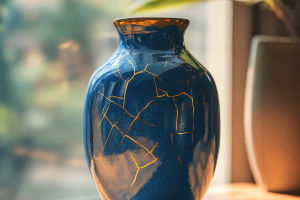In today's world, we're constantly reminded of the importance of protecting the environment.
But what if we could also make art while doing it? That's exactly what's happening in the exciting new trend of creating art from discarded materials.
As we dive into this movement together, you'll see how it's inspiring us all to think more creatively—and more sustainably.
Why Art and Sustainability Go Hand in Hand
We often think of art and the environment as separate worlds. One is about creativity, the other about conservation. But when we combine them, we unlock powerful new ways to raise awareness and reduce waste.
The concept is simple: by using old, unwanted materials—think plastic bottles, metal scraps, fabric remnants—we can create beautiful, meaningful art. This not only gives new life to what would otherwise be trash, but also sparks important conversations about our impact on the planet.
Where This Trend Began
The idea of making art from waste isn't new, but it has gained momentum in recent years as climate concerns have grown. In fact, many modern artists cite inspiration from movements like Arte Povera in the 1960s in Europe, where artists used humble, everyday materials to challenge the traditional art world.
Today, this trend has expanded globally. From large-scale installations in public spaces to DIY projects in our own homes, the message is clear: creativity and sustainability belong together.
Popular Materials Artists Are Using
Let's take a closer look at what's showing up in these eco-friendly artworks:
• Plastic waste: Bottles, bags, and packaging can be transformed into colorful sculptures or intricate weavings.
• Metal scraps: Artists weld and shape old wires, cans, and tools into stunning industrial-style pieces.
• Paper and cardboard: Torn pages and boxes find new life in collages and 3D art.
• Fabric remnants: Scraps from the fashion industry or worn-out clothes become textured canvases or patchwork masterpieces.
• Wood offcuts: Builders' leftovers or fallen branches often inspire organic sculptures and functional art pieces.
We can all imagine how these once-forgotten items can shine in the right hands!
How This Art Raises Awareness
It's not just about aesthetics. These works encourage us to reconsider how we consume and discard items every day. When we see a breathtaking sculpture made from bottle caps or an intricate wall hanging created from old T-shirts, we're reminded that waste has value—and that we can all do our part.
Many artists also use their platforms to educate viewers about environmental issues, hosting talks or including educational signage with their installations. Some even collaborate with environmental organizations to amplify their message.
Getting Involved: You Can Try It Too!
The best part about this trend is that anyone can join in. We don't need to be professional artists to create something meaningful from discarded materials. Here are a few ideas to get started:
• Collect colorful plastic lids and create a mural for your home or community center.
• Use scraps of fabric to design a unique tote bag or wall hanging.
• Repurpose old jars and cans into planters or lanterns.
• Experiment with paper collage using old magazines or packaging.
By exploring these projects, we not only express our creativity—we also develop a deeper appreciation for the materials around us.
Looking Ahead: A Greener Art World
As we continue to navigate environmental challenges, the role of art will become even more important. More galleries, museums, and festivals are showcasing eco-friendly art, and more schools are encouraging students to explore sustainability through creative projects.
We can expect to see even more innovation in this space, with artists experimenting with biodegradable materials, digital upcycling, and collaborative community installations.
Let's Create Together!
Now it's your turn—what materials do you have lying around that could become your next art project? We'd love to hear your ideas and see what you create. Share your upcycled masterpieces with us, and together, let's inspire more people to turn trash into treasure.


